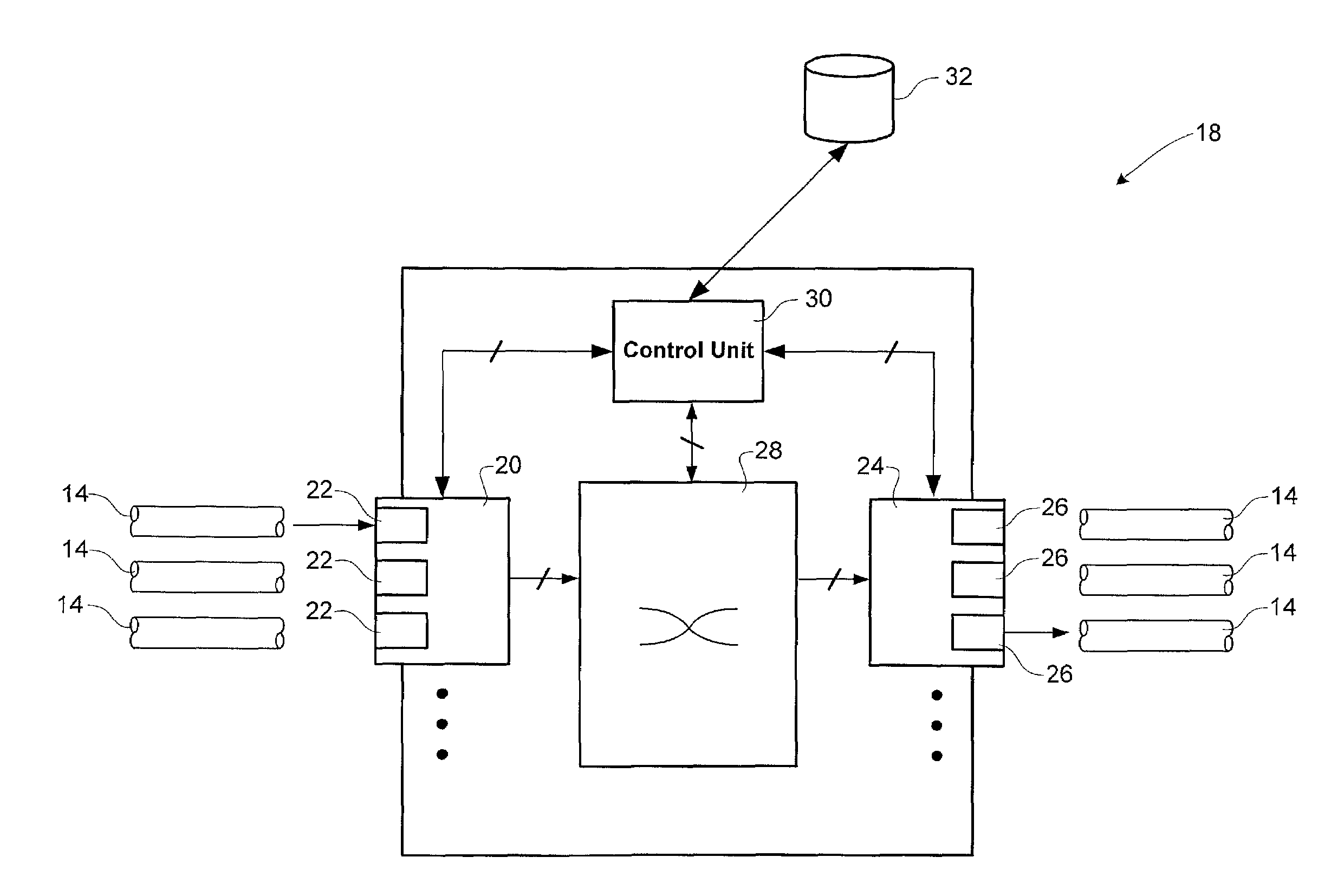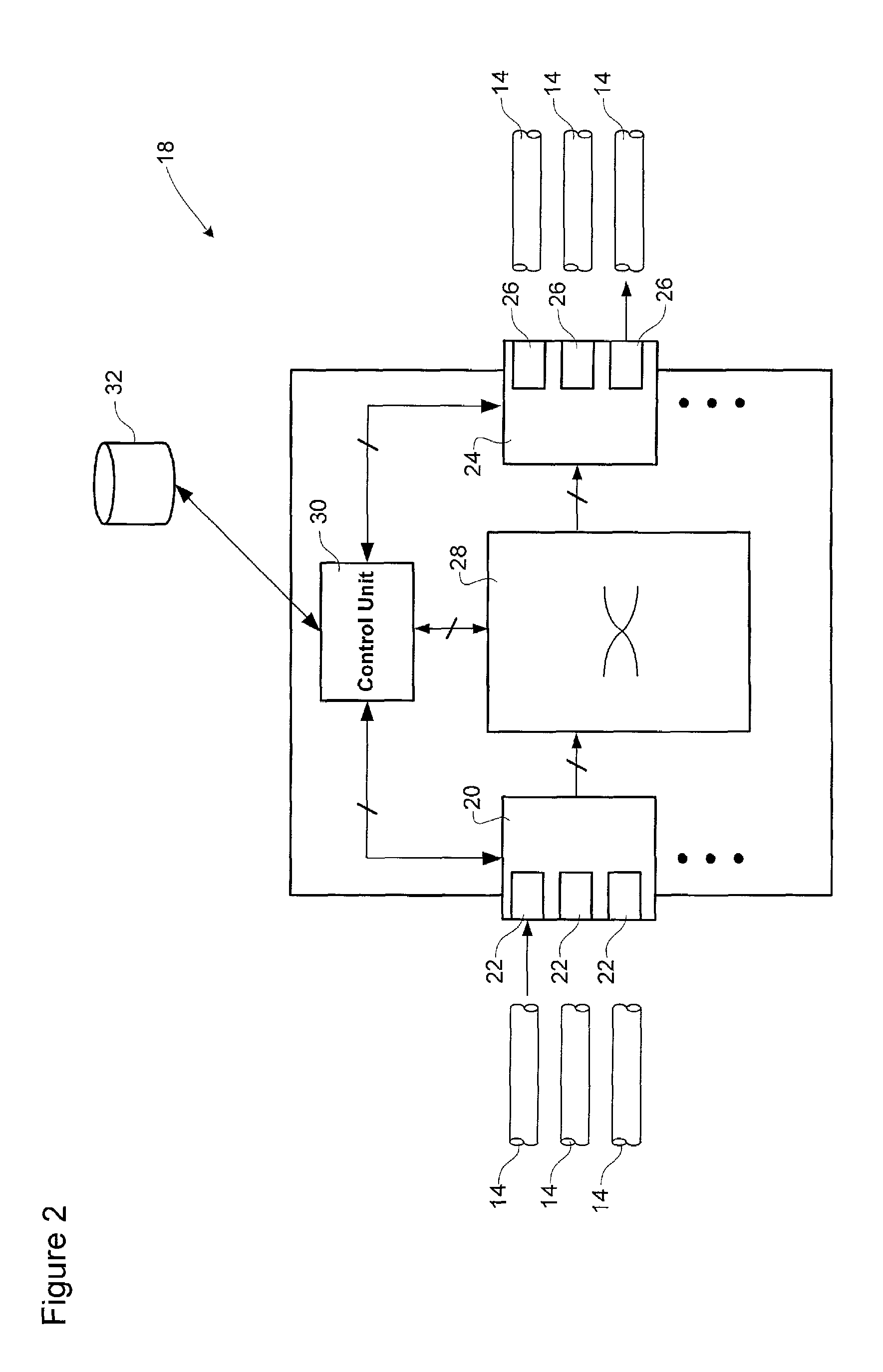Dormant backup link for OSPF network protection
a backup link and network protection technology, applied in the direction of data switching networks, instruments, digital transmission, etc., can solve the problems of increasing the complexity increasing the network management effort, and the topology of fig. 1 is vulnerable to resource failure, so as to maintain the simplicity of the network topology and/or management, and minimize the requirements of network management and administration.
- Summary
- Abstract
- Description
- Claims
- Application Information
AI Technical Summary
Benefits of technology
Problems solved by technology
Method used
Image
Examples
Embodiment Construction
[0037]The present invention provides a method of protecting an Open Shortest Path First (OSPF) network against resource failures. FIG. 1 illustrates an exemplary network 2 in which the present invention may be deployed. In the embodiment of FIG. 1, the network 2 includes two areas 4 (Area 0.0.0.14a and Area 0.0.0.24b) that are linked to a backbone network 6 via one or more respective Area Border Routers (ABRs) 8a,8b. Each area 4 includes one or more internal routers (IRs) 10, which control the forwarding of traffic among user machines (e.g. PCs 12) and the ABRs 8 hosting the area 4. The routers 8,10 are coupled together by links 14 (which may be physical or logical links) through which packetized data is forwarded. Thus within area 0.0.0.14a, traffic flows between ABR(A) 8a and user machines 12 within that area 4a are routed through IR(A) 10a via link 14a. Similarly, within area 0.0.0.24b, traffic flows between ABR(B) 8b and user machines within that area are routed through IR(B) 10...
PUM
 Login to View More
Login to View More Abstract
Description
Claims
Application Information
 Login to View More
Login to View More - R&D
- Intellectual Property
- Life Sciences
- Materials
- Tech Scout
- Unparalleled Data Quality
- Higher Quality Content
- 60% Fewer Hallucinations
Browse by: Latest US Patents, China's latest patents, Technical Efficacy Thesaurus, Application Domain, Technology Topic, Popular Technical Reports.
© 2025 PatSnap. All rights reserved.Legal|Privacy policy|Modern Slavery Act Transparency Statement|Sitemap|About US| Contact US: help@patsnap.com



